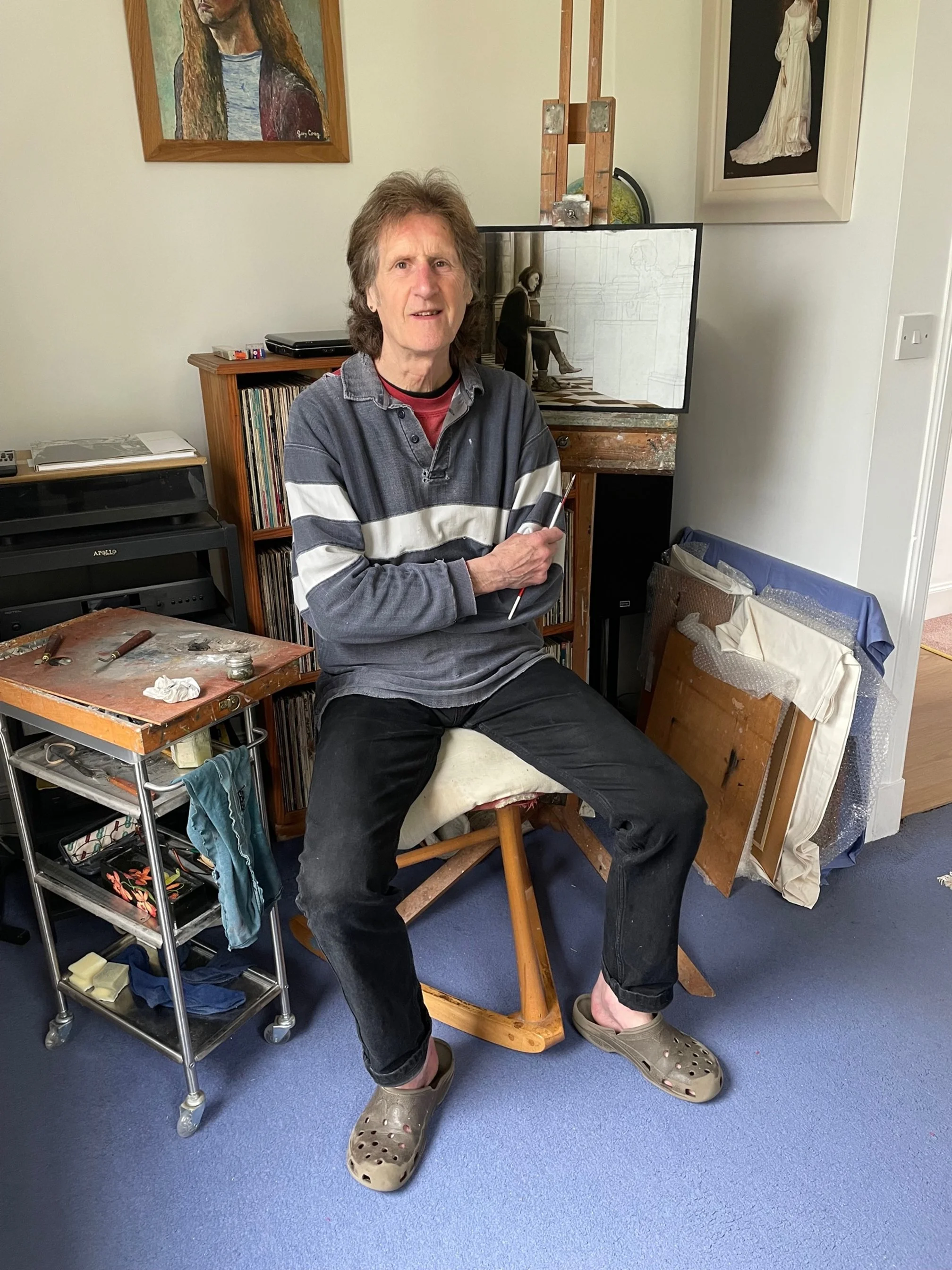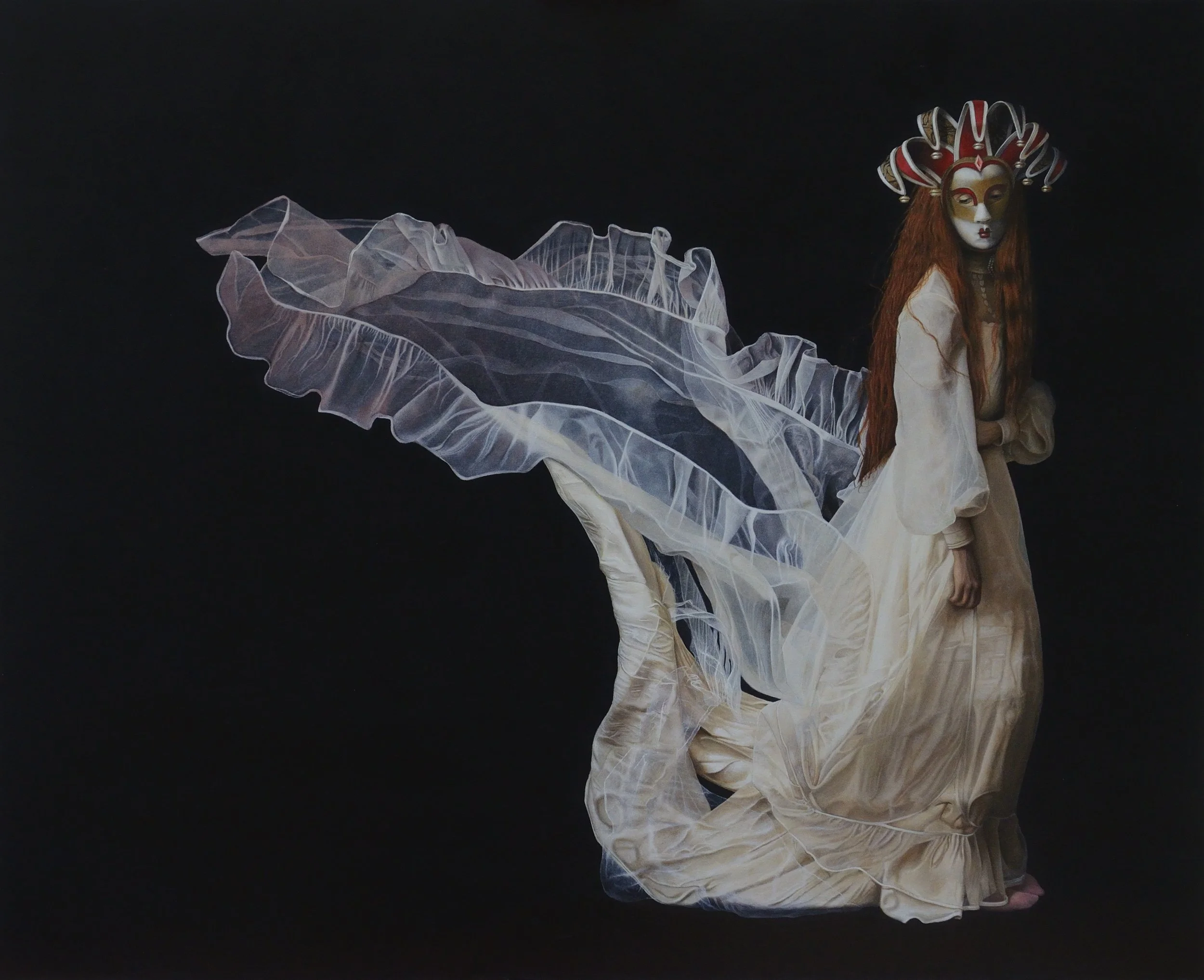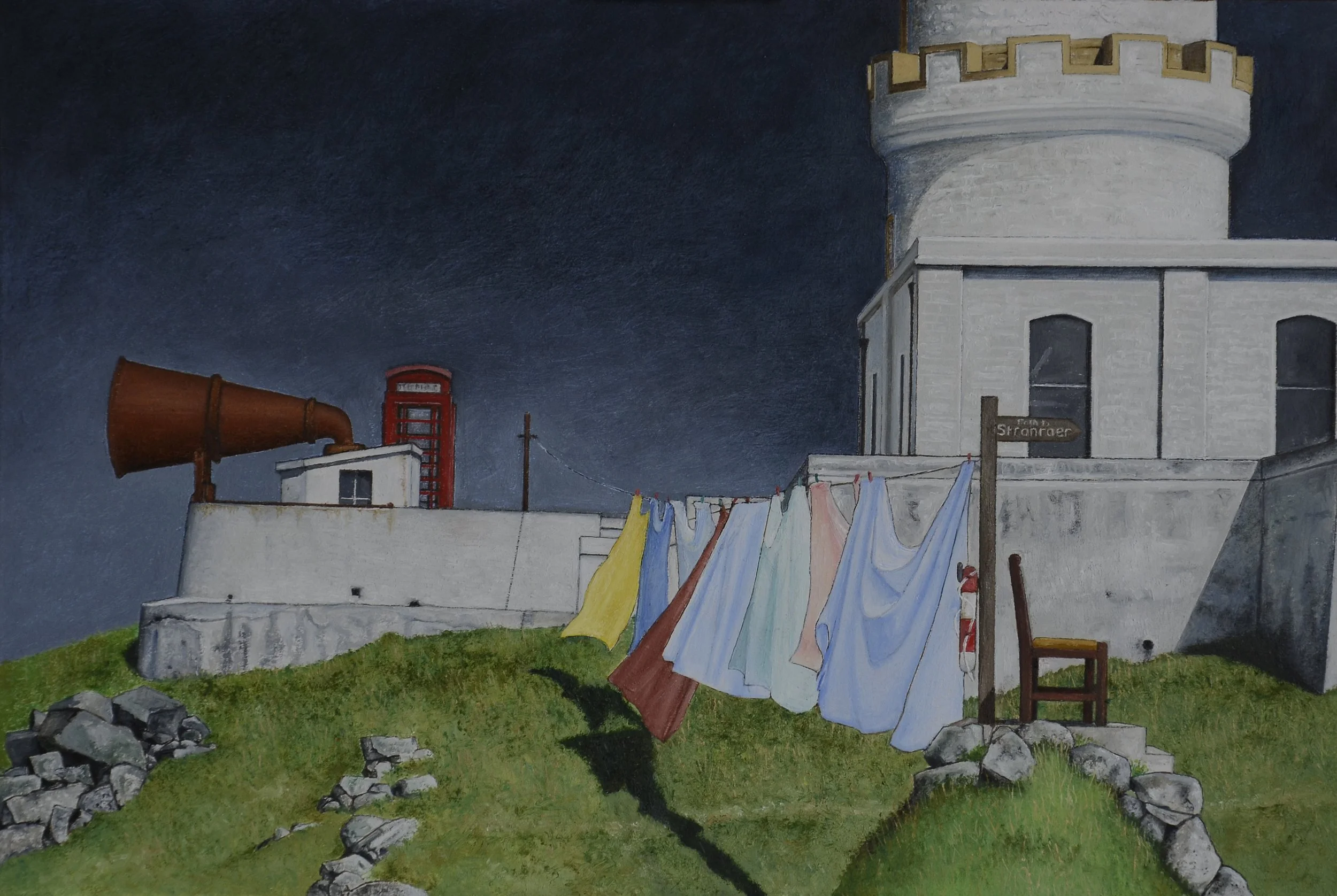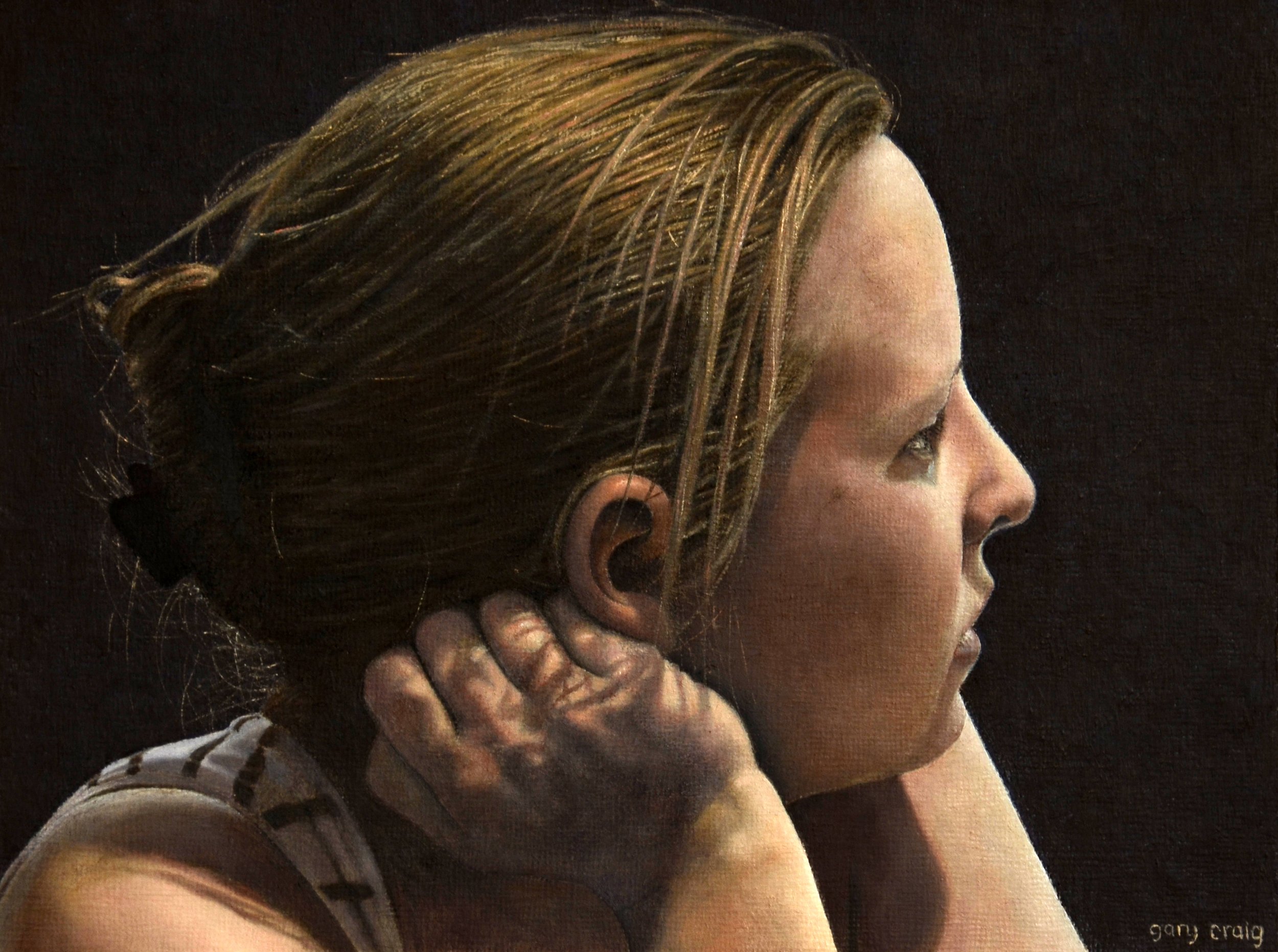ARTIST INTERVIEW: Gary Craig
Tell me about yourself and what inspired you to become an artist
Ever since I was a child I have been interested in art. I can remember when I was about 10 years old copying the cartoon characters from The Valiant and Beano comics. The lines of the artwork fascinated me and I wanted to create them. To see the drawing being built up in front of me inspired me to go on and on. I then wanted to learn more about art and in my teens I cruised around the second-hand book shops for art books in order to learn what I was looking at. In one second-hand book shop I found a book entitled ‘‘Les Maitres de la Peinture au Musée du Louvre’’. I was thrilled. It showed art from the 13th to the 20th century and it was the first time that I became aware of the Impressionists. I was so intrigued by this style of art and very soon I was in the lap of the Impressionists with Van Gogh leading the way. Then, I became aware of Picasso and as with Van Gogh, I used to copy his paintings to try and understand the way he painted. I was like a sponge soaking up art, but I have to say that when I saw my first Caravaggio, I knew in which direction I wanted to go.
What is it that fascinates you about portraiture?
I think that the bottom line is that I am interested in people and what makes them tick. But what gives me the greatest pleasure is capturing the person and their essence on canvas. I tell my clients that the only way the commission is going to be successful is that they need to be very frank and very truthful about what they see on the canvas. When someone views a canvas they know within the first three seconds as to whether they like it or not. And it is my challenge to make sure that those first three seconds are positive. If a commission is not going well for whatever reason, I am quite prepared to walk away. Up to date this has never happened and with all of my commissions there has been a positive outcome.
How do you capture the essence of an individual in your work? How do you choose the perfect composition to capture someone’s personality?
My wife used to be an acupuncturist and when she had a new patient she used to carry out what is termed a TD (Traditional Diagnosis), going sometimes back to the patient’s childhood to see if some event in the past is contributing to the problem. This gave me the idea of using this approach with my commissions. The only way to achieve a good portrait is getting the likeness correct but also getting the essence of the person in there as well. For me the only way to achieve this is to spend time with the client and find out about their past, their likes and dislikes and what makes them feel comfortable or uncomfortable. Some people open up very quickly and others have to be prised open very slowly. I suppose what I am doing is finding that certain je ne sais quoi that goes to making the person who they are. Sharing a bottle of wine is a great way to get to know someone.
For the composition I take a lot of photos of the client in various poses so that they can see an image of what the commission is going to be based on. I have also noticed that during this exercise, I sometimes capture an image of the sitter when a certain gesture is used, which at times can be very fleeting, but it is definitely of that person. Sometimes when I point out these gestures the sitter is unaware of what they have done. Including these gestures goes towards capturing the essence. I had one client who wanted his portrait to have photos and personal objects to reference his past and his three children, which we had organised on a table behind him. He was seated on a settee in front of the table and he could not decide what his pose should be. In exasperation he just sat down and put an arm along the top of the settee. I immediately took an image of the pose and showed him and he was delighted. It was him being shown in a relaxed position with the family references in the background.
You use a variety of mediums throughout your work. How does your choice of medium in each piece of work reflect the narrative/mood you would like to convey? What is your favourite medium?
I only use two mediums, pencil or oil. I do pencil portraits for studies but all of my paintings are executed in oils. I have found that although oils are rated from transparent to opaque, even with opaque oils what goes underneath them affects the final layer. I find this totally fascinating and even now I am being surprised.
Thinking about your most recent work, where did you start? Tell me about your creative process
With all of my work I grid the canvas. I like to be exact and gridding the canvas goes a long way to helping me to achieve that. I then draw out the composition and start the underpainting. The underpainting is very useful to me for it creates a tonal map of the painting and I can see what values the highlights, mid-tones and shadows are and whether they need to be altered. I do the underpainting in raw umber which is cool and helps to bring down any over warm colours. I used to do the underpainting on the skin tones in green, for this is an effective way to cool down overheated skin tones. When I am satisfied with the underpainting, I invite the sitter to give their opinion, for this is an excellent stage for changing any part of the composition. Then I start to build the colour up from the background to the front and using whatever props the sitter can supply. The final phase for me is building up the skin tones. I usually only ask a sitter to pose for about 20 minutes at a time.
You have a Telephone Box series of oil paintings, what inspired you to do this series of work?
My wife and I were walking through the woods one sunny afternoon and I thought that it would be very intriguing if we came across a telephone box in the middle of the woods. I mentioned this to my wife and she agreed that it would be an interesting theme for a painting. I really liked the idea so I started the series and then added the dimension of placing the telephone boxes in various locations in Galloway, South West Scotland, where we live.
Out of all your portraits, who has been your favourite subject to paint and why?
That is difficult to answer. I have done five portraits of my daughter and with knowing her so well I can really capture the essence of her. The same goes for the portrait I did of my mother. Knowing my daughter and my mother as I do, I managed to go deeper and put not only the essence in but emotion as well. The last portrait I did was of a woman in her kimono, sitting at a table deep in thought. The background to the portrait was her garden and I found this so enjoyable adding nature to a composition, from the woods in the distance, to the different kinds of grasses and the cat in the foreground. I felt the painting really told a story and the client was delighted with it.
Who is your favourite artist? If they were sat next to you right now, what would you ask them? Do they have an influence on your work?
I think it is hard to name one favourite artist. There are three that I greatly admire, Lucian Freud, Euan Uglow and Caravaggio. I think if I had to pick a favourite it would have to be Caravaggio and I would ask him which boundary he was going to push next? His use of perspective for example was quite amazing, for instance The Crucifixion of Saint Peter and Supper at Emmaus, which had led some people to ask whether he used an early camera obscura? And yes, he has influenced my work - in particular I so admire his skin tones. None can better him I think.
What has been your greatest achievement/challenge as an artist so far?
Having the portrait of my daughter Ellie accepted for the National Portrait Gallery/BP Award in 2020, which was the last BP Award exhibition the National Gallery hosted before they closed for refurbishment. BP have come to the end of their sponsorship so it will be interesting who will be the next sponsor.
Why do you think art is important in society?
More than anything else, it is a form of expression. There is so much being pushed at us through technology and ‘advancement’ that I feel that goals in life are becoming very blurred and ever changing. For me the one thing that stays the same is sitting down in front of a piece of art, whether that be a painting, sculpture, installation, photography etc and appreciating what has been achieved and what is being said. Art can mean so much in different ways to so many people and many interpretations can take place. Which is great.











